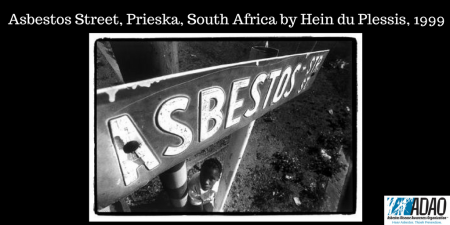Posted on August 25, 2017
Fighting Asbestos: The Developing vs Developed by Dr. Claire Deacon (PhD Constr Mgt)
 Asbestos mining, and the production of asbestos containing products for industrial use, was banned in South Africa in 2000. It’s been a sad fascination with the United States of America (USA), who has not banned the mining, importation and use of asbestos to date.
Asbestos mining, and the production of asbestos containing products for industrial use, was banned in South Africa in 2000. It’s been a sad fascination with the United States of America (USA), who has not banned the mining, importation and use of asbestos to date.
Despite the ban 17 years ago, asbestos still affects so many. In South Africa, in one case study that sought to identify homes built with asbestos roof sheeting in the Johannesburg township of Soweto, a total of 63% of houses were older than 20 yeas, and most with corrugated asbestos sheets. Asbestos material was a cheap option and with good insulation pre-2000, and for many years was believed to be a safe option. However, it was identified that 53% of such homes could expose our precious next generation to asbestos, resulting in our young being potentially at high risk of developing mesothelioma when needed to develop and grow our young democracy (Phillips, Renton, Murray, Garton, Garton, Tylee, and Rees, 2007).
Many occupational health (OH) services are focused towards the formal sector, however, work is increasingly occurring in the informal sector, and the consideration of domestic environmental aspects, such as exposure of tailing dumps and dusts from mines. In the Northern Cape, the tailings of crocidolite mines were used as surfacing materials for roads, and general buildings. Many communities where asbestos was mined are among the highest in the world, who have been diagnosed with mesothelioma. Prieska in the northern Cape, being one such place (London, 2006).
Sawry, Rees, and Kielkowski (2006) cite that of the 163 lung and pleural diseases, pneumoconioses were reported from the manufacturing and power generation sectors. A total of 12 mesothelioma cases were reported from a number of sectors, including construction. Asbestos was reported as causative in 52% of lung and pleural diseases (Sawry et al., 2006). Phillips et al. (2006), indicate that costs identified to address the asbestos exposure during becoming compliant was done at enormous cost. Replacement of soil, hand cleaning and removing contaminated foliage.
Why a highly developed country like the USA, vs South Africa as a developing country, exposes its precious people to such risks, the losses and the devastation asbestos causes, is beyond comprehension. There are highly vulnerable groups at risk from exposure to asbestos and asbestos containing products, commercially and environmentally. The USA can, perhaps learn from the heartache still experienced from the legacy of asbestos exposure in South Africa. It is my fervent hope that the American people take their duty of care, and vote for change against the use, manufacture and importing of asbestos.
References
London, L. 2006. Taking toxins home. Occupational Health Southern Africa, pp 4-6.
Phillips, J, Renton, K, Murray, J, Garton, E, Garton, E, Tylee, B, Rees, D. 2007. Asbestos in and around Soweto dwellings with asbestos cement roofs. Occupational Health Southern Africa, pp. 3-7.
Phillips, J. I., Rention, K, Badenhorst, C. 2006. Potential health hazard from cleaning asbestos cement roofs: a case report. Occupational Health Southern Africa, pp. 20-22.
Sawry S, Rees D, and Kielkowski, D. 2006. Occupational respiratory diseases in South Africa results for non-mining industries from SORDSA, 2000–2003. Supplement to Occupational Health Southern Africa, pp. S3-8.
